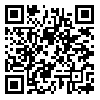Volume 20, Issue 1 (5-2012)
Avicenna J Nurs Midwifery Care 2012, 20(1): 14-24 |
Back to browse issues page
Abstract: (15583 Views)
Introduction & Objective:Work – Family Conflict (WFC) has been described as a maladaptation between work and family roles that occurs when role pressures from the work and family domains are mutually incompatible. As WFC is inevitable, it is necessary to study the ways of facing and dealing with it. This study was designed to examine nurses’ experiences of different ways of coping with WFC.
Materials & Methods: This study was conducted based on qualitative content analysis approach. In this study 16 nurses, 12 females and 4 males , were selected based on purposeful sampling. Data was gathered through unstructured interviews. The method of data analysis was inductive content analysis approach.
Results: All 16 participants had bachelor's degree and 4 to 28 years of work experience, the average year of work experience among them was 14/9 years. Research findings showed that “individual coping” was the main theme against WFC and included following subcategories: 1-self control, 2- shift regulation, 3- dodging, 4- adjusting and 5- resorting to spirituality.
Conclusion:Our findings demonstrated that nurses like other workers make individual efforts to cope with the conflict. In some cases the individual efforts are successful and reduce WFC conflict but in some other cases, because of the nurses’ discontinuous training and relative adequacy in relation to managing conflicts, individual efforts are ineffective in reducing W-F conflict. Therefore it is recommended that all nurses be familiar with various forms of W-F conflict and learn scientific methods of conflict resolutin to reduce the negative consequences of W-F conflict as much as possible.
| Rights and permissions | |
 |
This work is licensed under a Creative Commons Attribution-NonCommercial 4.0 International License. |


